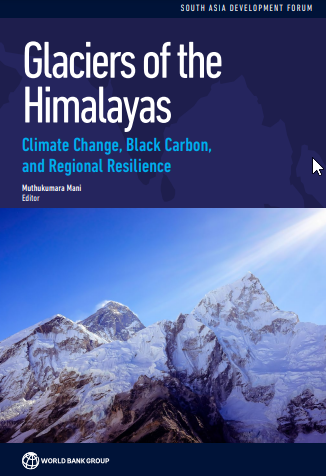Glaciers of the Himalayas
Editorial: The World Bank Group
Licencia: Creative Commons (by)
Autor(es): Mani, Muthukumara
Melting glaciers and the loss of seasonal snow pose significant risks to the stability of water resources in South Asia. The 55,000 glaciers in the Himalaya, Karakoram, and Hindu Kush (HKHK) mountain ranges store more freshwater than any region outside of the North and South Poles. Their ice reserves feed into three major river basins in South Asia—the Indus, Ganges, and Brahmaputra—that are home to 750 million people. One major regional driver of the accelerating glacier melt is climate change, which is altering the patterns of temperature and precipitation. A second driver may be deposits of anthropogenic black carbon (BC), which increase the glaciers' absorption of solar radiation and raise air temperatures. BC is generated by human activity both inside and outside of South Asia, and it may be meaningfully reduced by policy actions taken by the South Asian countries themselves. Glaciers of the Himalayas: Climate Change, Black Carbon, and Regional Resilience investigates the extent to which the BC reduction policies of South Asian countries may affect glacier formation and melt within the context of a changing global climate. It assesses the relative impact of each source of black carbon on snow and glacier dynamics.
[Washington: 2021]
Compartir:
Una vez que el usuario haya visto al menos un documento, este fragmento será visible.


